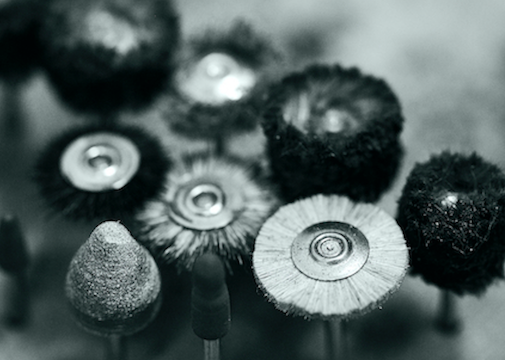Which Wheels, Mops And Buffs Should I Use?
The world of jewellery polishing equipment is vast and difficult to navigate when you first start out. Even as you build your kit of jewellery making tools and supplies, and create your own style of jewellery-making, knowing which wheels, mops and buffs to use for a professional finish can be complex.
That’s why we’ve put together our guide to different types of buffing wheels and mops, so that you can tell the difference between a calico mop and a bristle polishing disc – all while using them to finish your latest designs to a professional standard.
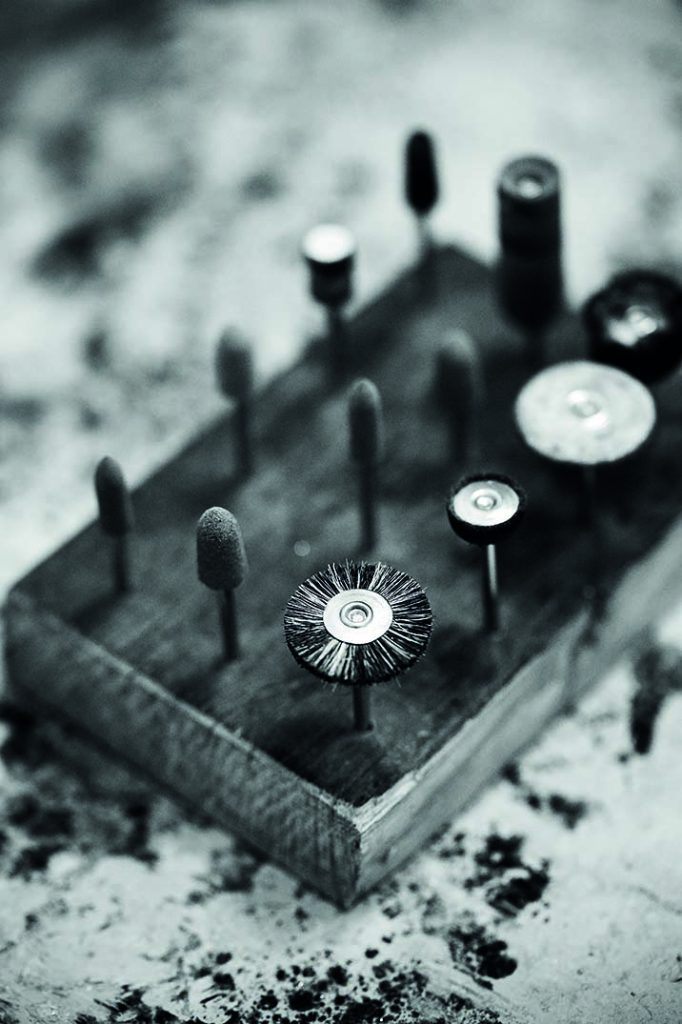
What is a buffing wheel?
If you’re just starting out you may want to start with the basics. So what is a buffing wheel exactly? And what is its purpose? Buffing wheels are an abrasive wheel used to smooth and polish metal jewellery and carry a polishing compound. Once the compound is applied to the buffing wheel it will spin (either with the use of a handheld rotary drill or an industrial scale motor polisher), consistently applying the polishing compound and leaving the jewellery piece smooth and with a high shine
What are the different types of buffing wheels?
Abrasive wheels for rough cutting
Useful for: Getting rid of jagged edges and deep scratches
Harder, more abrasive buffing and polishing wheels are generally the first step when it comes to metal work. They are often made from silicon carbide or tough rubber and are generally only used when the metal you’re working on needs to be more aggressively buffed to remove scratches or other damage. More abrasive rubber buffing wheels should only be used for grinding, de-burring, and de-scaling to eliminate deeper scratches, and remove jagged edges. Take a look at our current range of Artifex wheels – they range from a very coarse grit to a very fine grit and can help you kick start your jewellery buffing process
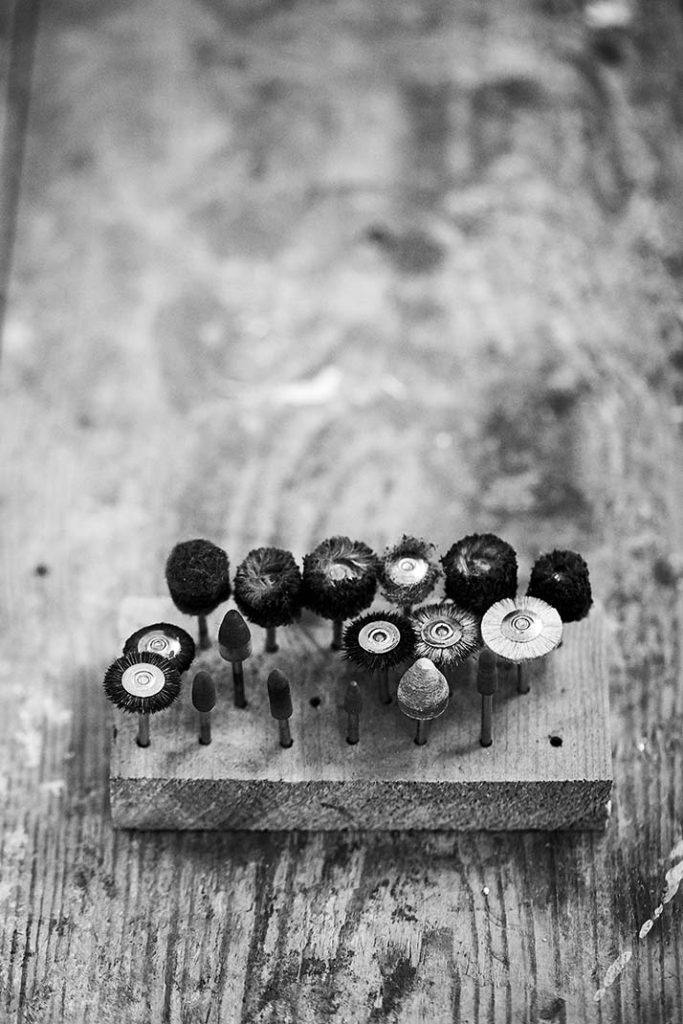
3M Radial bristle polishing discs
Useful for: Buffing smaller pieces without the need for polishing compounds
These unusual looking wheels are usually made of rubber and can be used to buff pieces with hard-to-reach crevices or those smaller pieces that are fiddly when it comes to polishing. The rubber is saturated with an abrasive compound, which means you’re able to polish up a piece without the use of a separate polishing compound and softer buff, eliminating any messy residues. One of the benefits of using radial bristle discs is that they also come in a range of grits that are colour coordinated, so you’re able to clean any hard-to-reach contours while removing any scratches, and work through the range of coloured discs to achieve an excellent mirror finish.
Cylinder, bullet & pin polishers
Useful for: Polishing hard-to-reach details
Using a smaller mandrel and handheld tool, mini bullet and pin polishers are handy for intricate work with small details that are hard to reach with any other metal polishing equipment. You may only ever want to use these miniature polishing tools when you have intricate details to reach and tidy up. However, you can also use them on the entirety of a smaller piece. This will help you save time – instead of swapping between a small and large tool. There’s no reason why you can’t use the flat edge of a small pin polisher to touch up the entire piece.
Similarly to the 3M radial bristle discs, you’ll find that all mini buffing tools are impregnated with an abrasive compound so there is no need to add a polishing compound along with these tools. You can buy sets of mini pin polishers in varying grits (and varying colours to indicate their grit) for use with a handheld polishing motor.
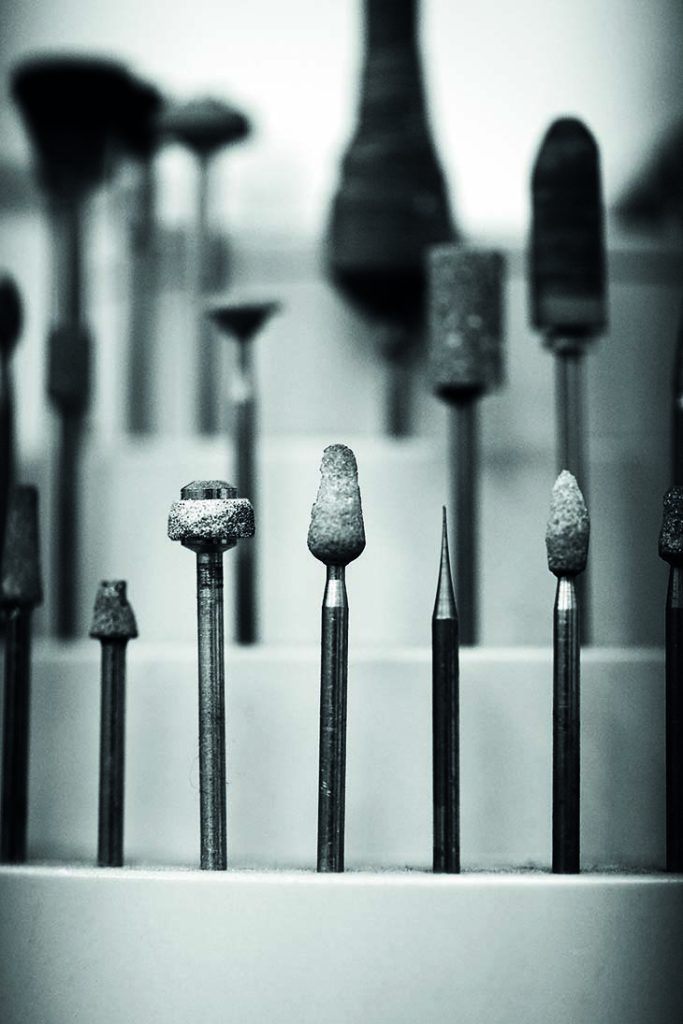
Soft buffing wheels and mops
Useful for: Finishing your pieces with a professional, mirror shine
Soft buffing wheels, also known as mops and buffs, are much softer and made to hold polishing compounds, such as jeweller’s rouge. Once the compound is applied, the mops are spun and applied directly to the metal leaving it with a high shine. This stage in the buffing process is generally the last step you’ll need to take, and typically, the polishing mops used can be made from a soft cotton, calico, felt, or muslin. These types of buffing wheels can be purchased in various sizes, ranging from small 1 inch mops right up to 6 inch mops or larger. They also range in thickness. This is because the cotton or muslin used is usually layered so the thicker the mop is, the more versatile it will be, helping you to get the most out of the tool when used with a polishing motor.
Tip: Remember to regularly clean your soft polishing mops, as the polishing compound you use with them will build up over time and harden, making the mop less effective.
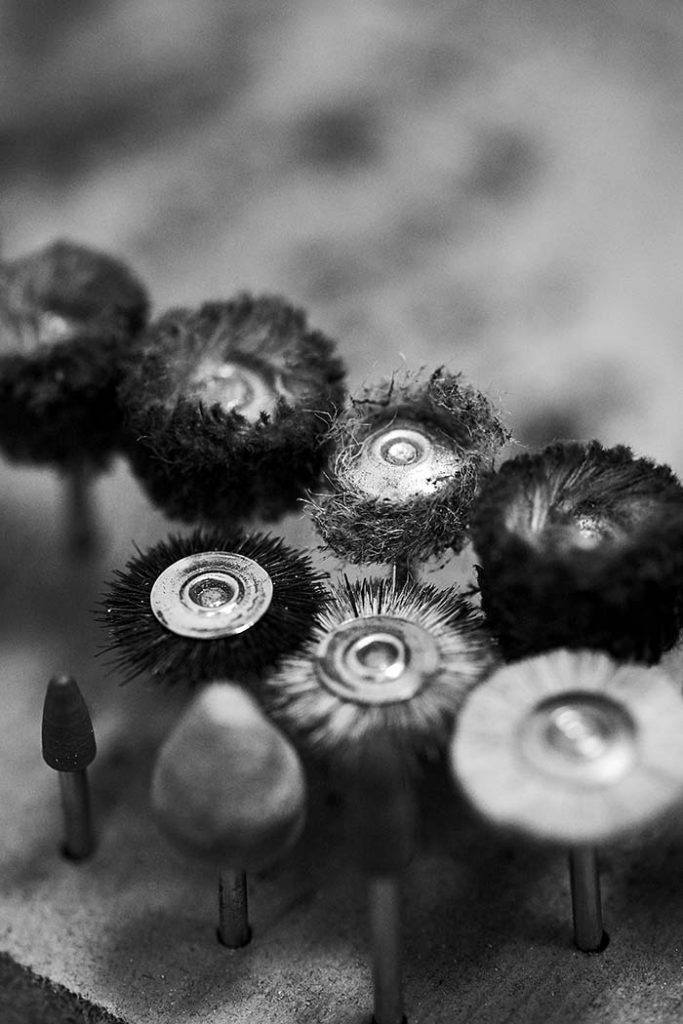
Matting abrasive wheels
Useful for: Creating a specific matt effect
Matting abrasive wheels come in handy when you want to create a specific matt effect on sterling silver pieces. They often feature strips of sand paper along with spongy nylon fibres and can be purchased in a range of grits and sizes to accommodate the size of your piece and the detailed areas that you need to reach. They leave a softer matt finish as opposed to a high shine so are a buffing tool that is only required if you would like to create this kind of finish. Take a look at our latest range of technique matting abrasive wheels and experiment with a matt finish to your latest projects.
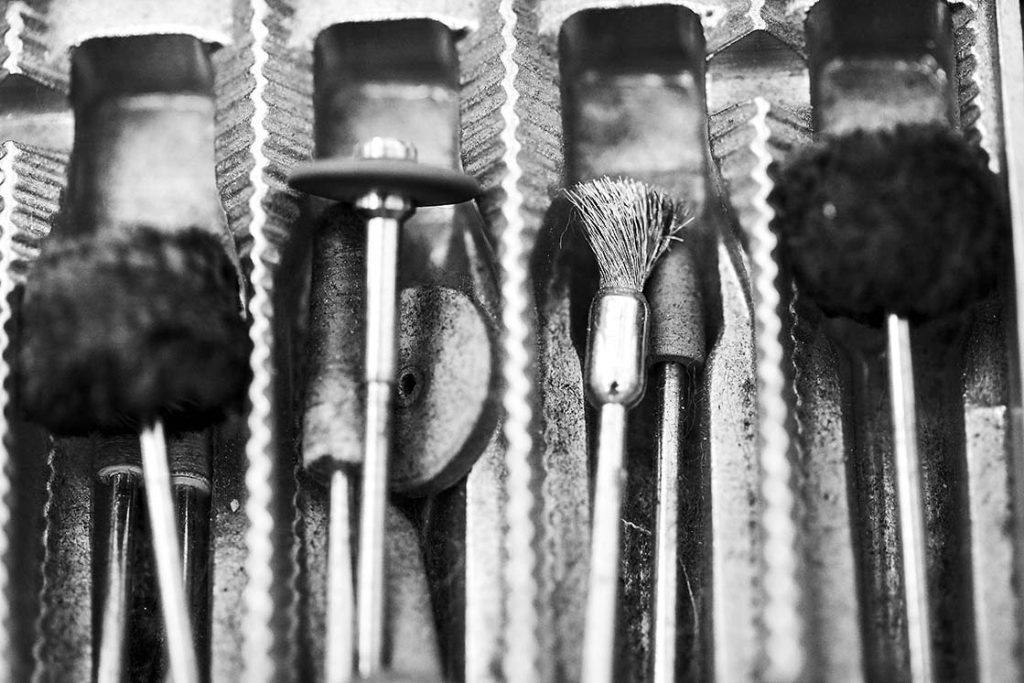
Now that you’re armed with the basic uses of different types of buffing wheels, you’ve got everything you need to buff and polish your latest collections for a professional, gleaming finish.Considering investing in a new polishing motor to use with different buffing pads and abrasive wheels. Take a look at our range of polishing motors from Proxxon, Dremel, and Durston.

Cooksongold

